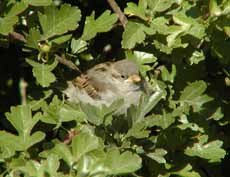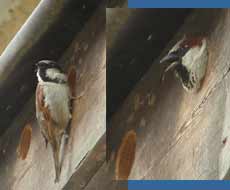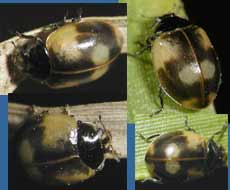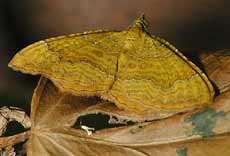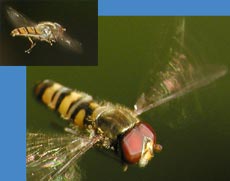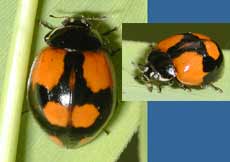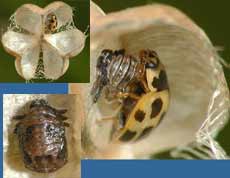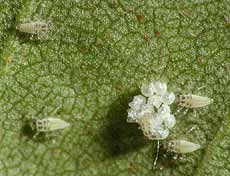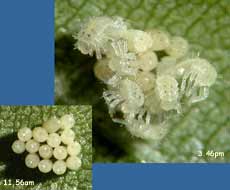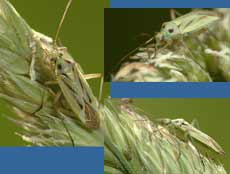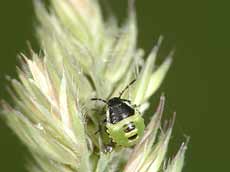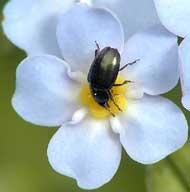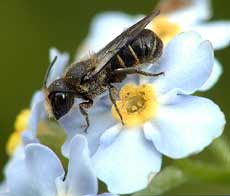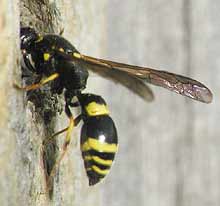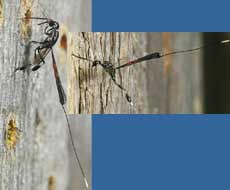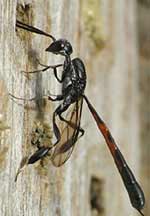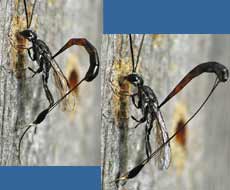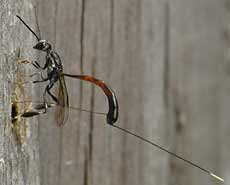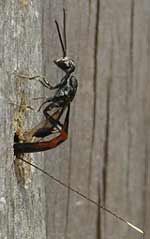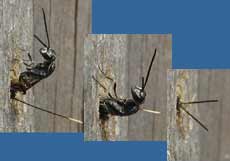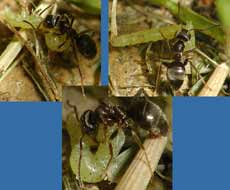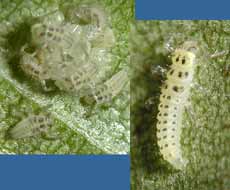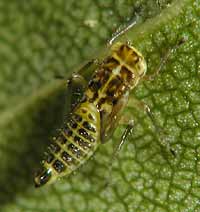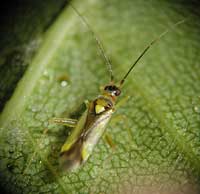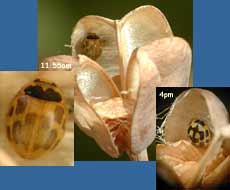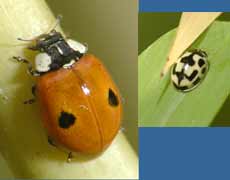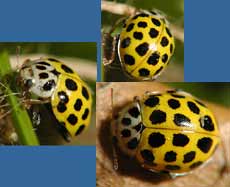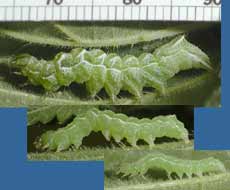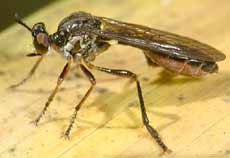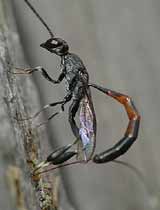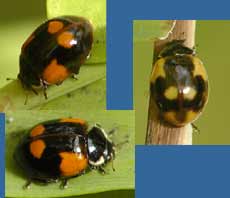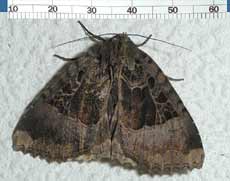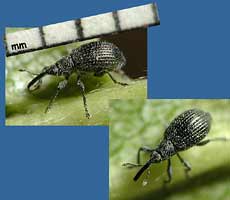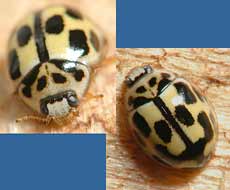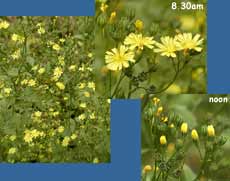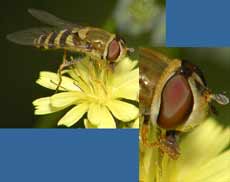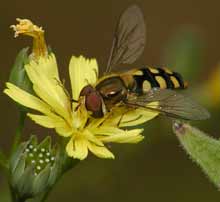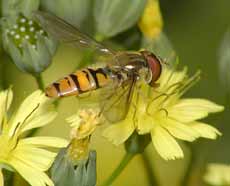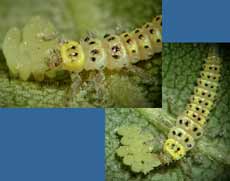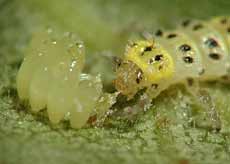Go to last entry of the month.....................Go to previous entry22 June - After a sunny start, the day turned increasingly cloudy and this evening it is raining - a welcome sight, considering how dry the ground is.
This youngster must have stayed in the same spot for over ten minutes before the need for food took over.
A bit later on, while I was doing something on the computer I was joined by a young sparrow in the house. It took ages to persuade it that it should be outside!
While there are a number of young sparrows being fed at the moment, none of our Sparrow boxes have been used by Sparrows so far this year. However, If this male has his way at least one box may yet be used. He spent the best part of two hours letting the whole neighbourhood know that he was at the nest boxes at the side of the house.
Another of our 'old friends' returned today - the Robin with the white feather on his head appeared for the first time since before our holiday, and he remembered where I stored the mealworms! Sadly, our optimism about the Goldfinches may have been misplaced. After appearing for three days in succession they have not returned since - the level of thistle seed in the feeder has remained unchanged. Today I finally got around to disposing of the chassis of our old trailer tent in which we had many great holidays with our sons when they were young. It had to be cut up so that I could take the metal to our local recycling centre.
This one is a bit of a puzzle. The nearest match I can find, colour wise, is a juvenile Pine Ladybird, but the front spots on the elytra do not have the characteristic comma shape seen on that species. The arrangement of spots is similar to a six-spot ladybird. It could be a melanic version, but I cannot see a mention of these colours.
24 June - Yesterday, as promised we had rain, lots of it, especially in the morning, and strong winds that continued through the night. I didn't take any photographs, but I did take my sickly 2-stroke lawn mower apart and clean it. When I put it back together it worked! I even managed to get our bits of grass cut when the rain stopped. Having been outside (under the caravan cover) for much of the day I was a bit surprised not to come across any frogs taking advantage of the wet conditions to hunt for food. They usually appear all over the place when it rains. It's still windy this morning, but the sun is shining and our male sparrow is again calling to the world from the nest box! Down at the bottom of the garden are some hedgehog droppings - the first seen here for a long time. Our local population seems to have gone missing this year. I have had some help with the identification of a few of the insects I photographed this last week. First of all, the boldly marked, black and yellow fly (19 June) is a hoverfly, a Chrysotoxum sp., probably Chrysotoxum festivum. The larval and adult leaf hoppers pictured on the 19th and 21st are possibly Eupteryx stellulata. Thanks to Hans Arentsen of www.gardensafari.net for that help. The ladybird pictured above is being a problem, with 2-spot to 10-spot being suggested. However, several people are certain that it is most likely to be a melanic form of the 2-spot Ladybird (Adalia bipunctata) - perhaps one that had recently emerged. Back on 26 April I photographed a very small beetle on a ragwort plant. That has now been identified as Longitarsus dorsalis, a flea beetle - thanks to Chris Sullivan for that, and for the further information he sent me about the beetle's status as a scarce insect in the UK. I will be reporting the sighting to the county recorder for Coleoptera (the beetles).
Before I forget again, I must put in this picture, taken a week ago, on the 17th. It's a Yellow Shell moth (Camptogramma bilineata) which I spotted, hidden amongst the leaves of the Ivy tree.
I only managed to get out with my camera this evening as the sun dropped behind the conifers beyond the garden fence. For a short time the sun shines through the archway formed by the Ivy tree and the Birch tree.
They can be very frustrating as they hover just long enough to find them in the viewfinder, only to move off suddenly as you press the shutter. I got close, but I left it a bit too late to start tonight, so I shall have to try again over the next few evenings.
25 June - A day of sunshine and interesting discoveries in the garden.
A comparison of these pictures with those taken on the 22nd suggest that they may all be of the same ladybird. It was suggested to me that the colouring may have been due to the ladybird having freshly emerged for its pupa. It looks as though that was the case.
The pupa shown in the bottom left image is one of two that are in other seed pods, one of which is still half full of seeds! While I was watching the ladybird one of my sons came to visit. Unfortunately the ladybird didn't wait and had disappeared when I returned to my camera, so I could not get a shot of it from above. Despite that omission , it is most likely to be a 14-Spot Ladybird (Propylea 14-punctuata).
Although I cannot identify them, it is likely that they are Orange Ladybirds, which are the only ones I am finding on the tree. They are very small, and as the branch they are on is prone to being knocked as people go past, I have tied it up above head height.
On the other side of the tree another group of eggs were intact this morning, but as these images show, they started hatching this afternoon.
They are all adults at the moment, although I shall be looking out for the larvae which feed on the aphids that are also present.
As I watched the bugs, a few other subjects presented themselves. On the grass was this 3mm long nymph of a shield bug.
All around the pond there are Water Forget-me-nots, and on one next to the grass was this tiny beetle, tucking into pollen, or nectar in the centre of the flower. To give you an idea of the scale, the flower measures about 10mm across, and the yellow centre is just under 3mm across.
When the sun shines these flowers are frequented by many of the solitary bees form our bee hotel. This one wasn't feeding, but was resting, side on to the sunshine.
Watching this bee prompted me to turn my attention to the bee hotel, and in addition to the small bees there was this wasp going back and forth from one of the 6mm holes. This is not a very good image because as I set myself up to take more photographs of it, another visitor caused me to forget everything else for quite a while.
You can just see a bee looking out of a hole (3mm across) just below the visitor.
It spent much of its time flying up and down the hotel, occasionally landing and checking out borrows with its antennae.
A couple of times it obviously sensed a suitable host. Then it seemed to use its hind legs to 'unwrap' its ovipositor from the long sheath that extends out behind the body.
The very delicate ovipositor was then inserted into the burrow,
and pushed deep inside.
Eventually the whole insect reversed in until only the antennae were visible.
We watched for several minutes as the ant struggled to carry a still alive larva (caterpillar or other?) back to the nest through the grass jungle. Several times the larva hung onto things and had to be prised free before progress could be made. I didn't try to get a hoverfly picture this evening!
A couple of the youngsters had wandered to other parts of the leaf, but the left hand image shows that most were still on or near the egg cases. Each measures just about 1mm in length. The right hand image shows one of several larger larvae ( this one is 3mm long) that I saw on other leaves. These are definitely Orange Ladybirds.
I also spotted this very different larva (nymph) on the tree. It measures about 3.5mm in length and is possibly the nymph of a capsid bug like the one shown below.
There are small numbers of these bugs on the Birch tree at the moment. This one measures almost 5mm in length (excluding antennae) and is (I think) a Campyloneura virgula. It feeds on aphids, as well as other small insects and spider mites - but, hopefully, not on Orange Ladybird larvae!
27 June - After yesterday's rain today has been dry, sunny and breezy, with just one short heavy shower in the early evening.
It happened sometime between 10am and noon and, as the images show, its colours took several hours to develop.
The ladybird seen in the garden most frequently at the moment is the 2-Spot Ladybird in its standard form, and usually on the bamboo plants. There was also this single 14-Spot, although it was very sensitive to movement and disappeared quickly once the camera got close.
A surprise sighting came in the form of this 22-Spot Ladybird (Psyllobora 22-punctata) which I found on the ground below the Stinging Nettles and Ivy tree. In 'Ladybirds of Surrey' there is a picture that shows a pair mating in which the female has a yellow base colour on it's thorax while the male is nearly white like this one, but the text doesn't say whether that is always the case. Like the Orange Ladybirds, these feed on mildew. On the birch tree I can now count at least a couple of dozen Orange Ladybird larvae.
A couple of the Stinging Nettles have grown a bit long and needed to be cut back from the path. When I did this I found several caterpillars of the Spectacle Moth (Abrostola tripartita). The pictures show three of them, ranging in size from about 15mm for the smallest to about 25mm.
Back on the 14th I photographed a fly that I couldn't identify. I saw the same type twice today and captured this image as it perched on a dead bamboo leaf. It has been identified by Nigel Jones of www.insectpix.net as a robberfly (Dioctris baumhaueri). Robberflies ambush other insects, catching their prey in mid-air.
The parasitic wasp has been back to the bee hotel a couple of times again today.
This afternoon I saw the Sparrowhawk attack the birds in the Hawthorn for the first time since we returned from our holiday. It wasn't successful.
28 June - Fine weather saw me out in the garden for most of the day, although the camera had just a couple of brief outings. Half the Hawthorn has been given a trim and I can see water in the pond again! Just a couple of ladybirds to record. Both were on the same bamboo plant that I found the one photographed on the 22nd and 25th. While both are 2-Spot Ladybirds, the ladybird in the left-hand images has no spots at the rear of the wing covers, so is a four-spot melanic form. The right hand one is a six-spot melanic form, and its colour suggests it had emerged this morning. I wonder whether they may all be from the same brood.
Bird activity is fairly quiet at the moment, although I had a fleeting glimpse of a juvenile Robin this afternoon. Over the last couple of days a male Greenfinch has been singing a great deal from the top of the conifers that overlook the garden. 29 June - Another dry day meant that I was able to deal with the other half of the Hawthorn. It has been a quiet day as far as photography is concerned. The first photograph being taken last night in our bathroom. The night before last Sheila was watching television when she was startled by an old lady, or rather, an Old Lady moth (Mormo maura). At the time we didn't know what it was, only that it was very large, probably the biggest moth we have ever had in the house. Anyway, Sheila retired upstairs while I was left to catch it. The only problem was that it too had disappeared - there was no sign of it under or behind any furniture.
It is a drab coloured moth, but as the millimetre scale indicates, the size of its fore-wings means it has a wing span of some 70mm, making it an impressive sight as it flew around the room.
The only picture to add to the diary today is of a rather smaller individual found on the underside of a leaf on the Birch tree. It is a tiny weevil. The nearest match to it that I can find is Protopirapion atratulum, a seed weevil.
A photograph of a rather pale 14-Spot Ladybird that didn't rush for cover as I pointed the camera at it.
30 June - A largely dry day, with just a couple of light showers that hardly wet the ground.
These plants are tall and very delicate and are a mass of yellow flowers each sunny morning. Sadly their display doesn't last through the day, and by lunchtime (especially when it's cloudy) the flowers have all closed up, as shown in the photographs.
This first one is (I think) a female Syrphus vitripennis. These are very similar to Syrphus ribesii. The tell-tale difference is that the top of the hind leg of S. ribesii is all-yellow, whereas S.vitripennis is mainly dark. Notice how it is using its front legs to hold onto an anther as it feeds.
This second hoverfly looks as though it is a male Eupeodes luniger.
This third hoverfly is the one that seems to be the most numerous in the garden - Episyrphus balteatus.
No adult ladybird photographs today (only 'normal' 2-spots seen), but I must include these pictures of an Orange Ladybird larva (just under 6mm in length) having a meal. I thought that, like the adults the larvae fed on the white, powdery coat of mildew that grows on the underside of the leaves. However, this one is evidently having a meal of egg (possibly of its own species!).
Those first two pictures were taken at around 6.20pm. This image was collected at 8.37pm, showing the remains of an egg as the larva moves its head away. Half an hour later it had moved onto another leaf. I shall be checking to see if it intends to have egg for breakfast tomorrow morning!
|
|
